An interview with Thommy Greer regarding his crawler with a principal focus on what he's done to it to make it competitive, and why.
- John Beech
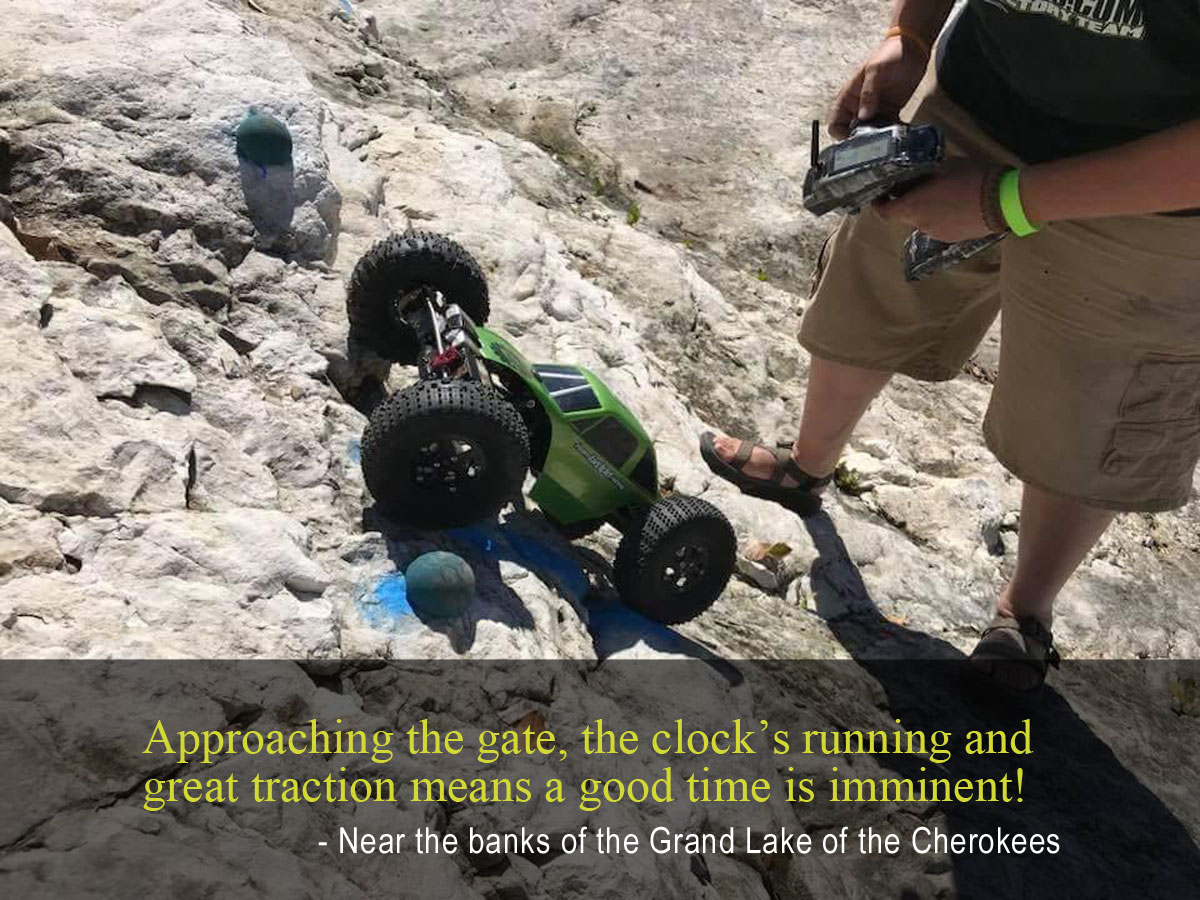
Based on a Losi Nightcrawler, this 2.2 Sporty has been modified beyond all recognition. I bought it new in 2010 as my very first crawler. While it was a lot of fun to drive
while stock, as my experience level grew I've spent many a long hour late into the night upgrading, modifying, and tuning it. And as my skills improved, I've learned a lot with it. Now it's finally to the point of being fairly competitive.

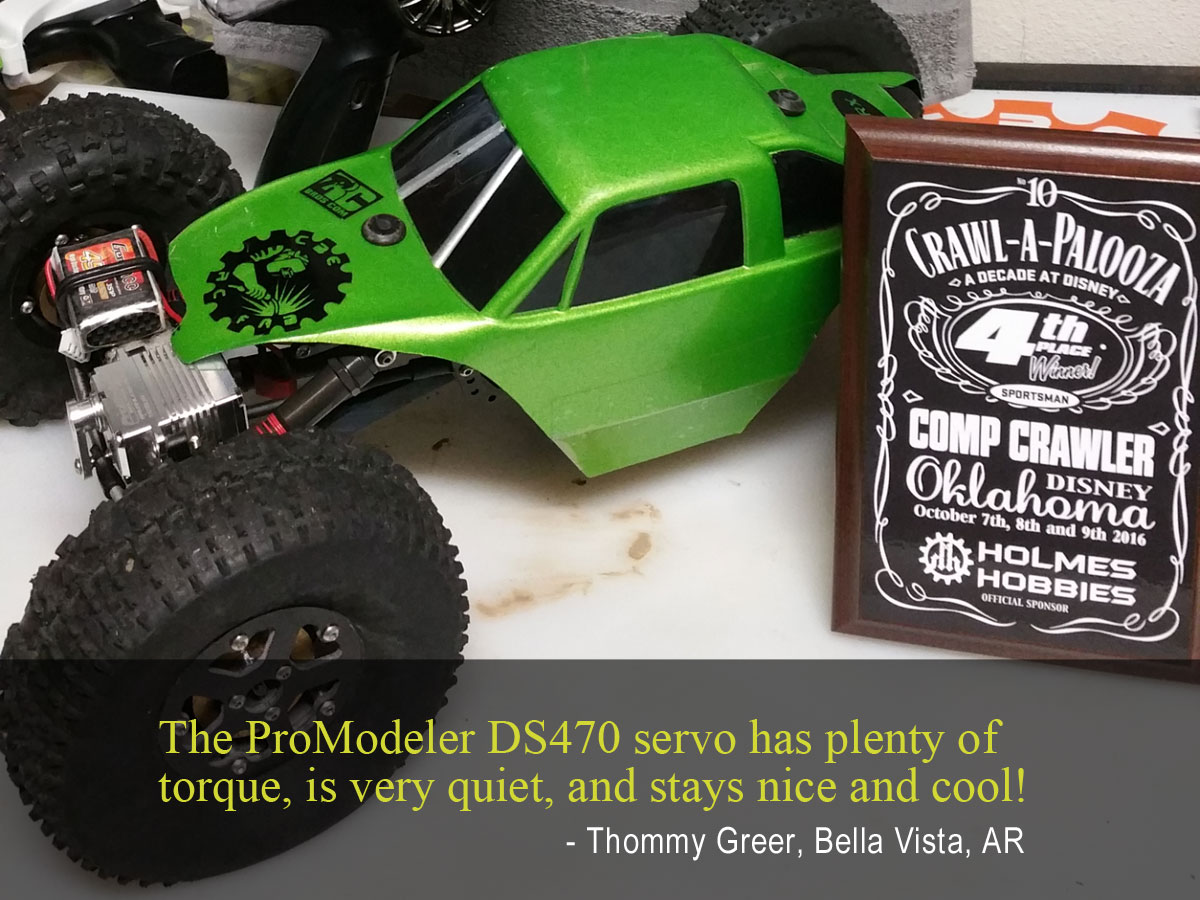
In fact, it's won several events including 4th at the Crawl-A-Palooza in 2016, and 3rd in 2017. If the name rings a bell it's because it's an event held at the rock crawling mecca of Disney, OK in Mayes County. In fact, this is the longest running crawling event in the world. Held at Hogan's Off Road Park on the 2nd weekend of October, prepping for it is one of the highlights of my year. And it's not just comp and scale rigs, but a chance to see 1:1 running around on the rocks, too. Anyway, there's plenty of information about the event on Facebook, so let's talk about the rig.

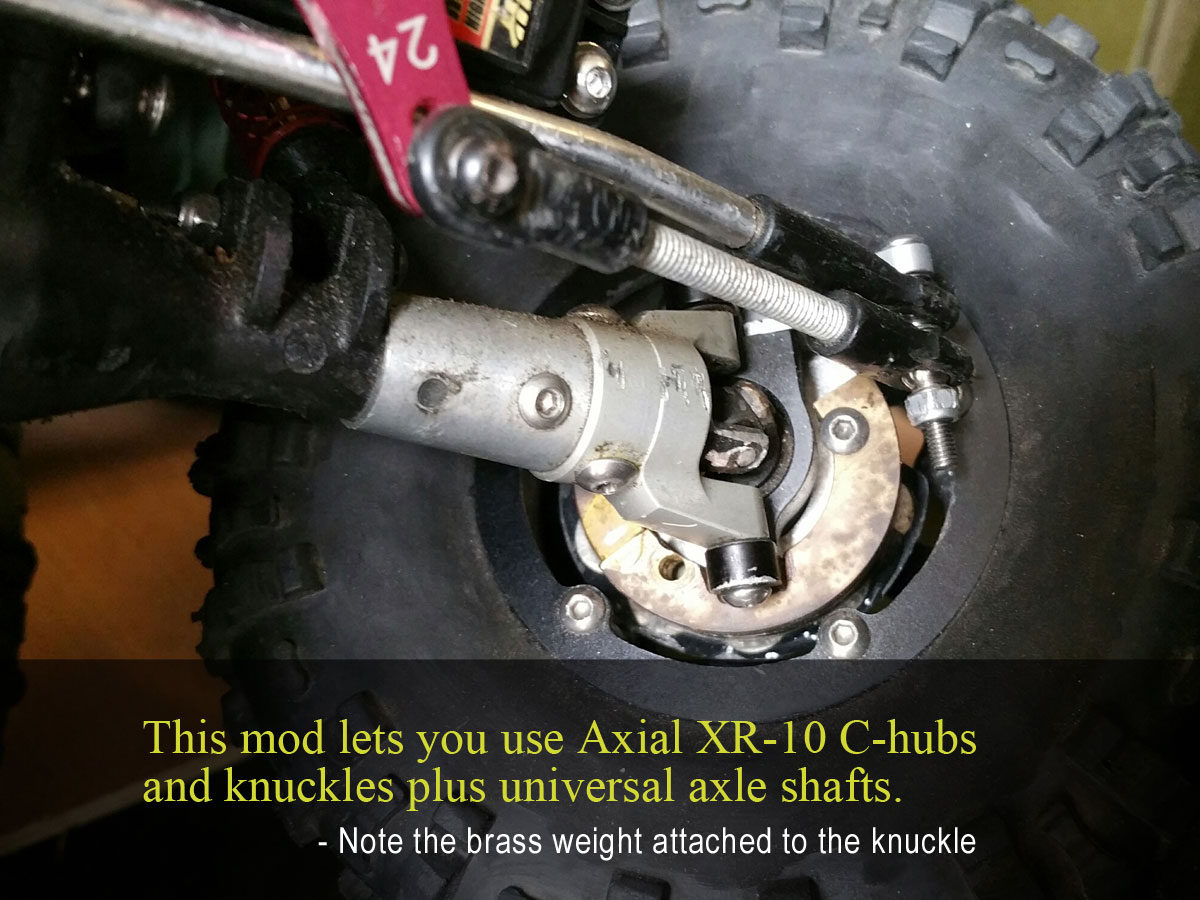
The biggest modification involved ditching the stock chassis for an RC Bros spider chassis. This upgraded chassis adds a lot more versatility because of the adjustability of the link geometry. Being able to set up the links affects how your rig handles on the rocks. Moving the links up or down affects squats and anti-squat as well as affecting vertical incline and sidehilling. Another major mod involved the axles and a TAG kit that's basically a tube that slips into the housing. In turn, this lets you use Axial XR-10 C-hubs and knuckles (plus their universal axle shafts). The result of this mod to the front axle is you get better steering . . . much better steering versus the stock setup.

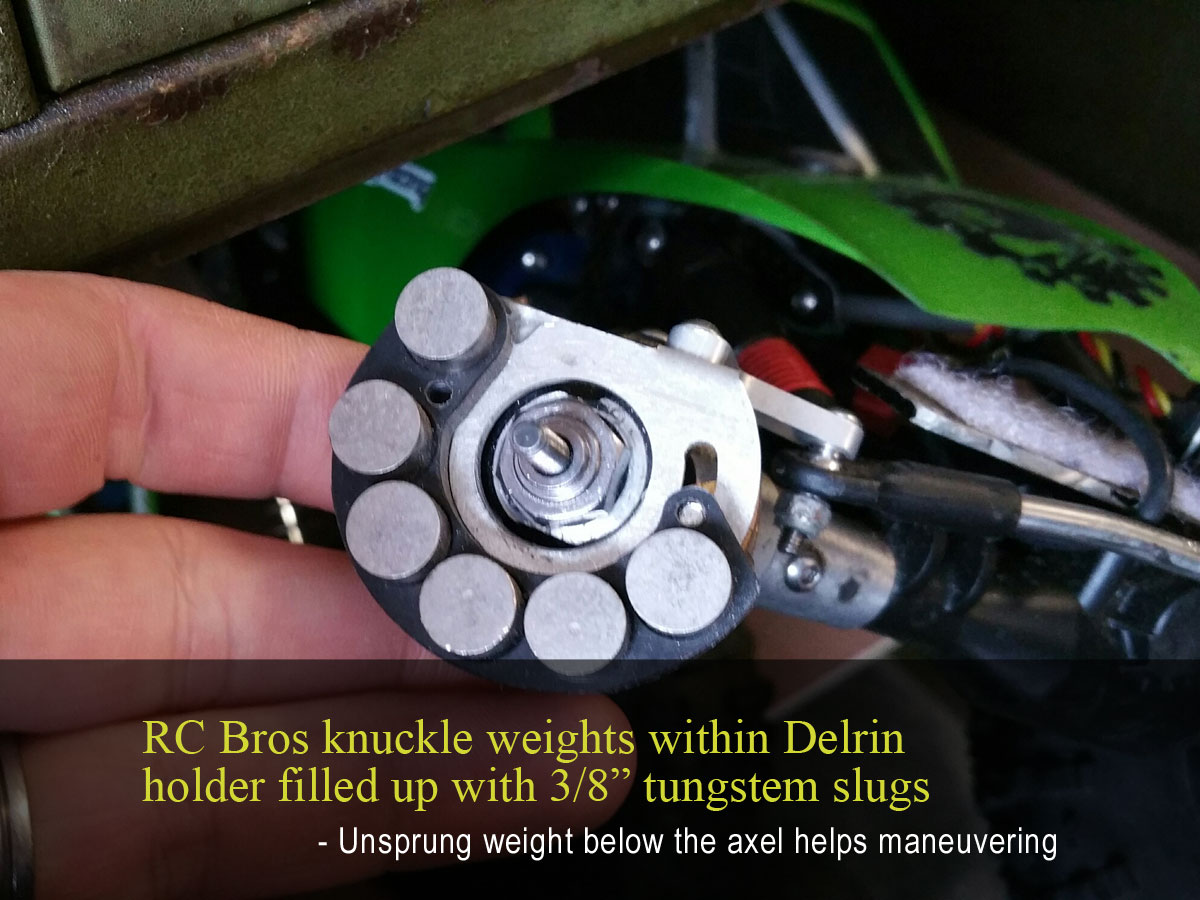
I'm also using RC Bros knuckle weights (Delrin holder and tungstem slugs) – these basically let you add unsprung weight at the lowest part of the vehicle (and out as far outboard as you can). Being on the knuckle means it's not rotating mass, which would hurt acceleration, and note, it's sitting below axle level. This is good! Remember, sprung weight is anything like the body, frame, battery, motor, etc. This added unsprung weight aids the rig while maneuvering.

Another essential modification is the over/under drive. Basically, the front runs a heavy duty spool and worm gear. The rear runs the stock spool with Dlux Fab chromemoly worm gear (chromemoly is an abbreviation for chromium-molybdenum steel). While chromemoly steel isn't as lightweight as an aluminum alloy, the much higher high tensile strength and malleability makes it great for this application. Of course, the reason for doing this is the stock worm gears wore out really fast (the chromemoly upgrade is almost impossible to wear out because it's tougher than nails). Anyway, what you end up with is a front with overdrive while the rear has the stock ratio. Basically, this means the front spins faster than the rear, which works to suck the rig down onto the rock. Plus it also helps it turn sharper. Finally, the rig has titanium and Delrin links – these are more durable than stock, which is important if only because they slide better over the rocks! Believe it or not, this can be a big deal.

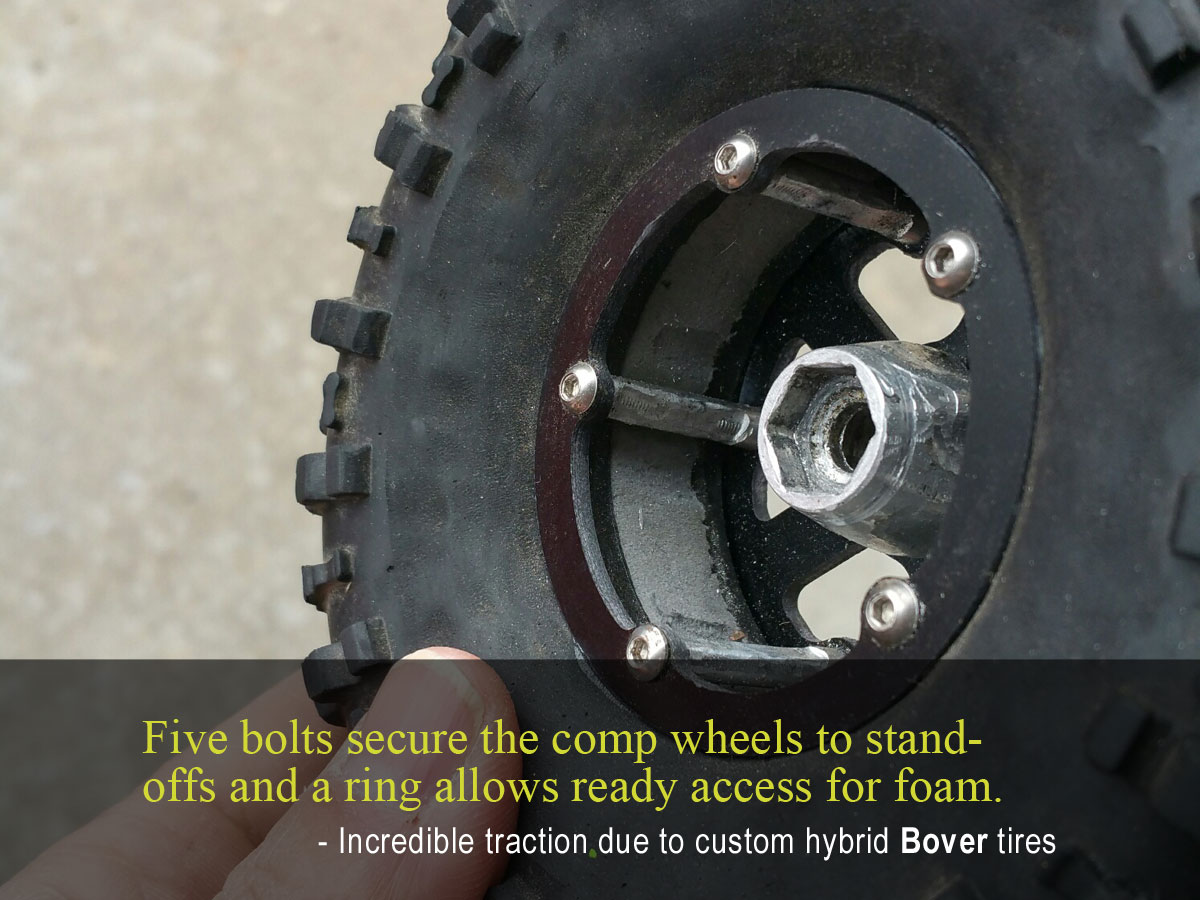
Of course the rig has comp wheels. These are also from TAG but since they're out of business, others have stepped up and offer them as well. Comp wheels aren't just lightweight, but most importantly, they're very easy for swapping out the foam within the tires. As experienced crawlers know, swapping foam quickly may be important for tuning the tires between events. Anyway, the comp wheels have a 5-bolt pattern with a ring on the back plus a plate on the front and standoffs in between. Basically, when you pull the bolts out of both sides of the standoffs, since the tires are glued to the wheels you can just pull the foam out of the middle of the ring. This, is way better than trying to cut the tire off the wheel after it's been glued on, or trying to use beadlocks since they have a ton of bolts, which means more time. Remember, it's a combination of what your rig weighs plus the terrain and available traction that greatly affects what you're going to use in a tire
foam. Being able to adjust, or tune the foam is super important for good traction.

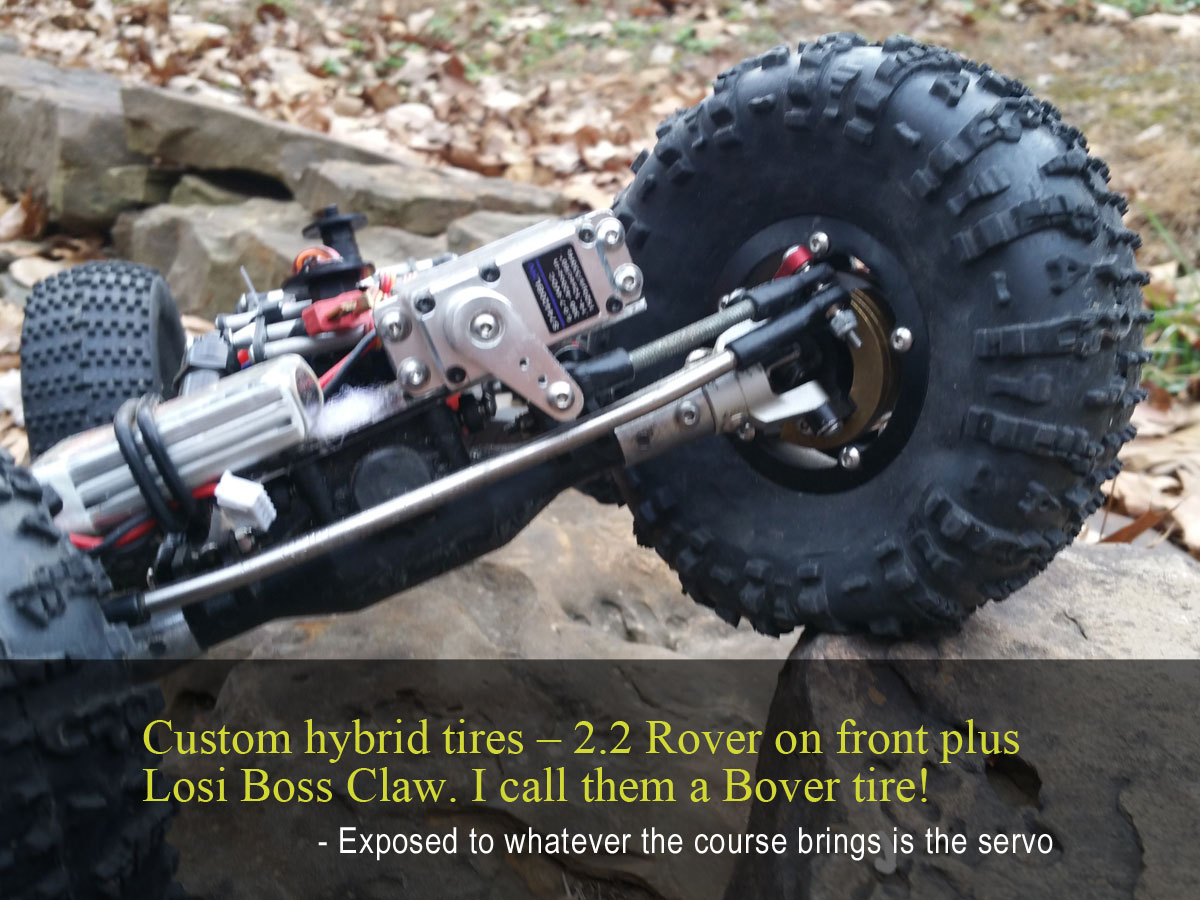
Speaking of traction, this brings us to the custom hybrid tires – 2.2 Rover on front plus Losi Boss Claw. I call them a Bover tire because we're basically dealing with
one half of each tire glued together. Yes, I essentially slice them in half and glue the two different tires together! And the rears are customized also. In this case, they're based on Hotbody Truggy Block Tires that have been narrowed and then 2.2 sidewalls are glued on. Sure, it's a lot of work, but they work really good . . . and like all competitors, I will pretty much work as hard as possible and try anything to win!
This brings us to the electronics and motor. I use a Brood vapor brushless motor for the usual reasons – cooler, faster, stronger, smoother startup, high torque at low RPM. The ESC is a Tekin RS. It works good with the brushless sensored motor – and most important, it's compact! As for the steering servo, the ProModeler DS470BLHV is my choice. It runs cool and is really quite. Moreover, since it's on the front of the rig where it gets abused like crazy, having a case machined from a solid billet of 6061-T6 aluminum is super important because not only does it run cool but it's basically bulletproof. Being a crawler, I've wedged the front wheels in crevasses and had to work them back and forth to get loose. I've killed a lot of servos before the ProModeler and I hear the new version is even tougher because they press bronze inserts into the aluminum case to reinforce where the steel gear shafts fit.
All in all, my rig's working pretty good. I'm looking forward to campaigning it this year.